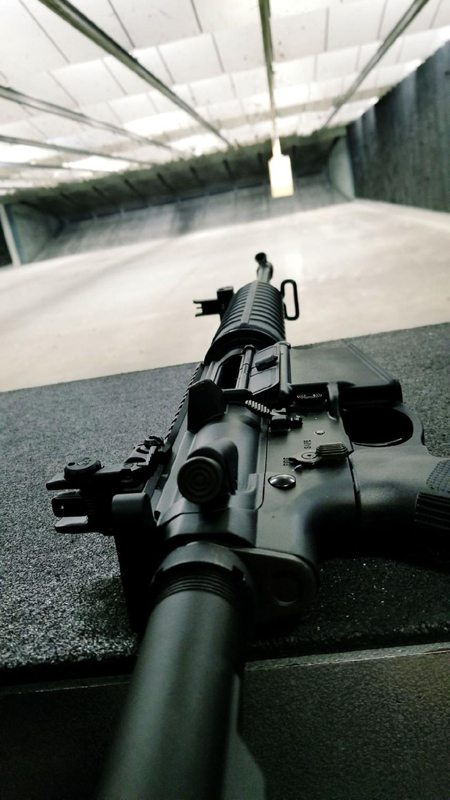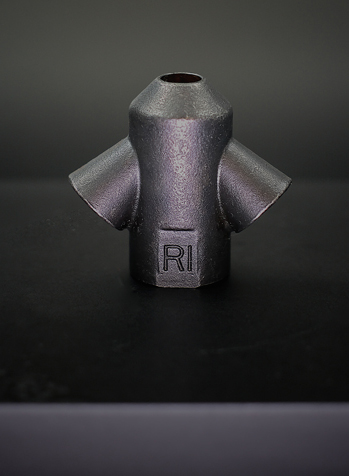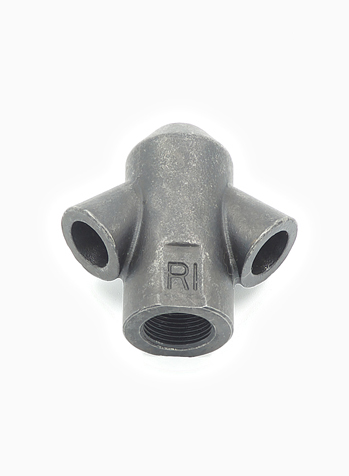
TECHNOLOGY CONCEPT VIABILITY
The idea for our patented muzzle brake came from NASA crew escape systems used on rockets. NASA crew escape systems create an upward force that lifts the capsule off the rocket. The two nozzles on the muzzle brake create a force away from the Soldier that counteracts the recoil and muzzle climb. Our new lightweight version uses external support to reduce the mass of the muzzle brake while retaining structural strength. We participated in the Xtechsearch 2 contest and made it past the first phase of the contest. The new lightweight muzzle brake (see Figure 3) designed using feedback from the judges in the Xtechsearch 2 contest. During a demonstration of our muzzle brake at Ft. Bragg, we discovered that the civilian version of our muzzle brake significantly reduces the weapons infrared signature. The lightweight muzzle brake will have more infrared signature reduction than the civilian muzzle brake.
Foundational Technologies
The foundational technologies we use are an integral part of the design. The expanding gases from the gunpowder create a distributed force on the inside surface of the nozzle. We can make a digital twin of the muzzle brake to reduce risk by doing virtual testing and tailor the muzzle brake to a weapon system for best performance. Design of experiments will reduce the iterations and lower development costs. Additive manufacturing can also add some improvement with lighter materials such as titanium alloy. We have used additive manufacturing to produce several prototypes. The limitations of additive manufacturing are mainly large parts. We will likely have to switch to near net shape casting with some machining for large parts such as 155mm muzzle brakes.
Our muzzle brake counters the recoil, muzzle climb, and lowers the infrared signature
Other recoil mechanisms such as spring and hydro-pneumatic systems are heavy, require maintenance, and add complexity to the system. Weapons using these technical approaches still have a large amount of residual recoil and require support legs to counteract the recoil. The M110 203mm howitzer used a hydro-pneumatic system but also needed a bulldozer blade on the back of the vehicle to counter the weapons’ residual recoil. Our muzzle brake counters the recoil, muzzle climb, and lowers the infrared signature with no moving parts and only requires occasional cleaning.
Risks associated with our muzzle brake are scaling risks to larger muzzle brakes and forces. We are going from a weapon with 14 lb. of recoil to weapons with thousands of pounds of recoil. Virtual and development testing will mitigate much of these risks.
Randall Innovations .308 (7.62) muzzle brake w/ 5/8-24 thread and crush washer |
 |
 |
 |
||
